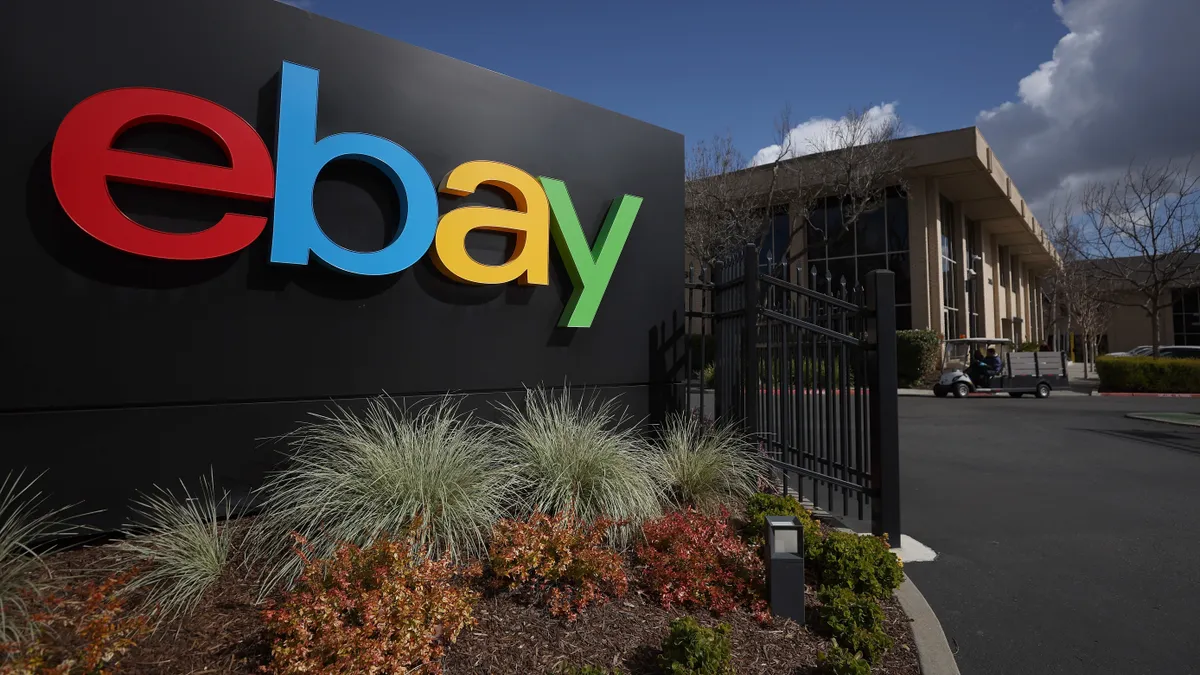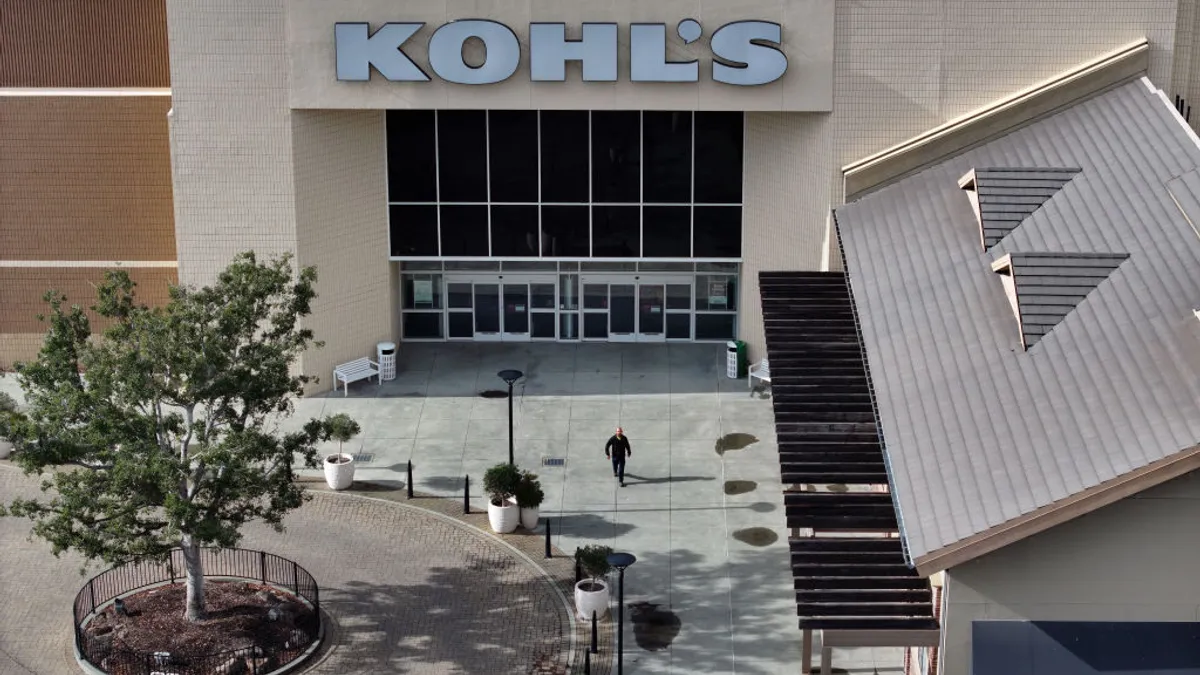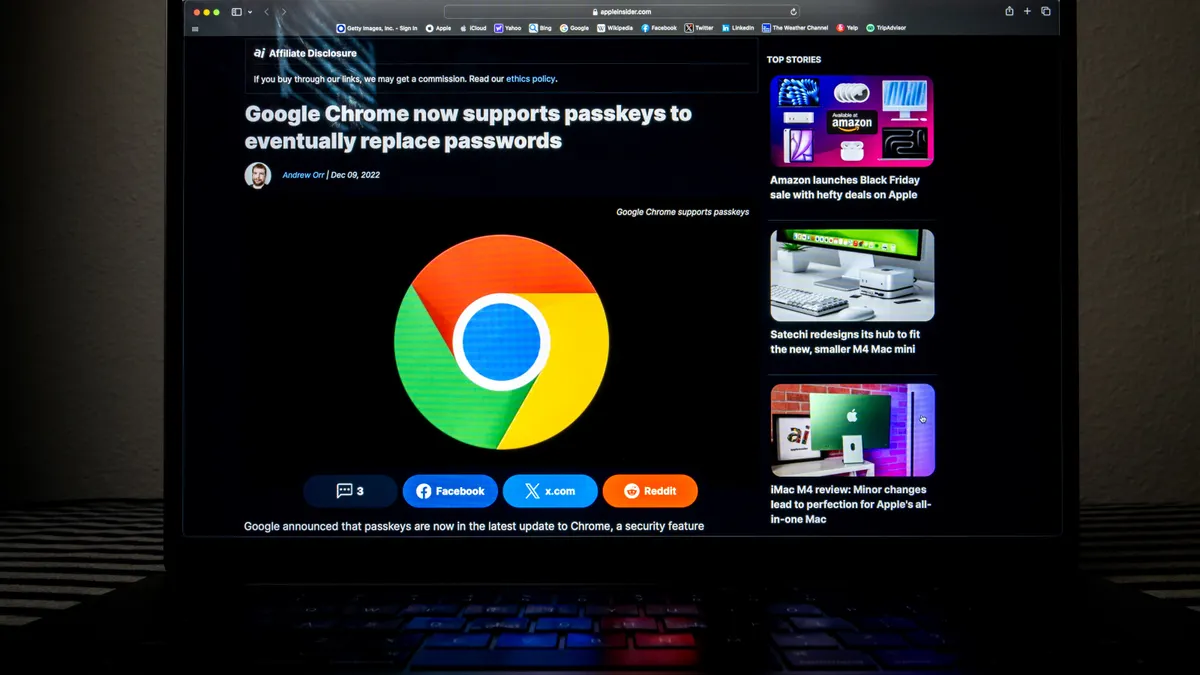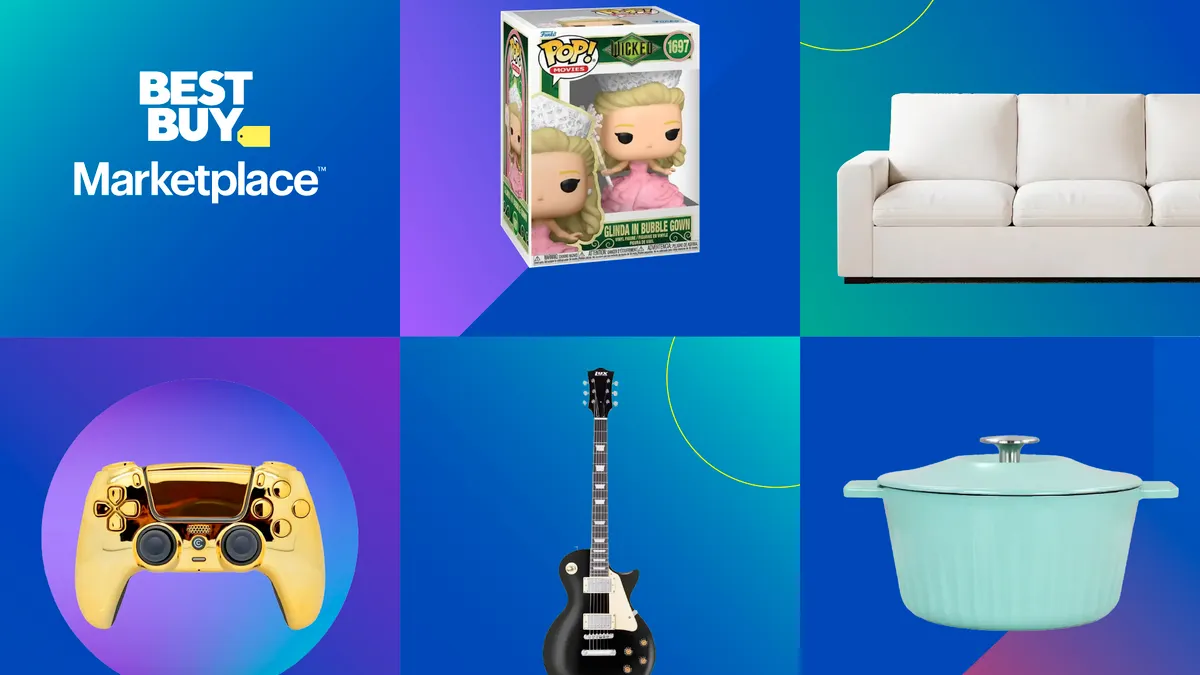In the quaint era of retail that was the 1960s, St. Paul, MN, native and high school dropout Richard M. Schulze launched a store geared toward audiophiles and music lovers called the Sound of Music. He had worked as a consumer electronics salesman after a stint in the Air Force, and his skills helped him quickly expand to a chain of nine or so stores.
But, according to lore, a tornado taught him a lesson about an impending style of retail. Forced to hold a sale after a twister destroyed one of his locations, people flocked to the event, despite its impersonal warehouse vibe. That prompted him to change his approach in 1983 — expanding his merchandise beyond Hi-Fi equipment to include computers and other electronics, enlarging his locations to 18,000-square-foot big-box stores and competing to a large extent on price. Taking note of shoppers’ irritation with the hard sell approach of salespeople working on commission, he also changed his compensation policies. Sound of Music became Best Buy.
Schulze no longer plays a pivotal role in the company he founded (he now has an emeritus title and serves as an "advisor" to the board). But the retailer is contending with other twisters — swiftly changing consumer expectations about shopping and the encroachment of retail’s great disruptor, Amazon, into its category.
A few years ago, things seemed dire. As with the storm that leveled a store, however, the company sees today's retail as an "opportunity-rich environment." At their investors day conference in September, Best Buy executives — including CEO Hubert Joly — outlined their strategy to advance the electronics retailer from a defensive stance to a growth strategy. "Best Buy 2020: Building the New Blue," includes "expanding what the company sells and evolving how it sells." That was a pivot from its more defensive 2012 position, Renew Blue, which was focused on cost cuts, store closures, merchandise changes and improved customer service — a strategy that halted its declines.
"[Best Buy knows] how to leverage their scale — and because they know about electronics, they know the ups and downs, and it gives them a strategic advantage."

Stephen Baker
Vice President and technology analyst at The NPD Group
"New Blue" already seems to be paying off. In its latest quarter, the company generated growth across almost all categories, and the largest drivers of same-stores sales were appliances, computing and smart home and raised its full-year revenue growth outlook. Executives were unfazed by a sales miss: Third quarter revenue rose 4.2% to $9.32 billion, but the company was hit hard ($100 million hard) by the late introduction of the Apple iPhone X, which landed in fourth quarter (and is selling briskly right now), and by hurricanes, which dragged down same-store sales by 15 to 20 basis points.
"They know how to leverage their scale — and because they know about electronics, they know the ups and downs, and it gives them a strategic advantage," Stephen Baker, vice president and technology analyst at global information company The NPD Group, told Retail Dive in an interview. "That’s what they sell, the technology, and I always thought that gave them a big advantage."
Merchandising
Not all retail disruptions have been a challenge to Best Buy — department stores’ abandonment of the category years ago helped feed it sales, according to retail analyst Nick Egelanian, president of retail development consultants SiteWorks International.
"Most 'category killer' commodity retailers were once departments in full-line department stores, and those that remain today have risen to the top of their respective industries," he told Retail Dive in an email. "Best Buy, now the dominant retailer in its space, is battle-tested from decades of both intense brick-and-mortar and stiff internet competition."
Indeed, Best Buy, Circuit City, RadioShack and a host of smaller players in recent years were challenged by lower-cost warehouse stores and underpricing on the internet, he said. Best Buy is the one left, unvanquished. "By intensely focusing on consumer expectations both in store and online, the company found its footing and today is the unquestioned leader in its category," he said. "Its ‘My Best Buy’ loyalty program has further solidified its relationship with its best customers."
It's a high-touch, low-margin business, Baker said. "If you go back a few years there were a lot more. Everybody runs into issues at times, but they’ve been good, big and important to the business," he said. "They think about it and think about ways to get support. If you look around, they are by far the largest consumer electronics retailer in the U.S., and it’s going to be a long time before anybody has enough juice, Amazon included, to catch up."
Marketplace
While retailers of all sorts have turned to marketplaces to extend their aisles and customer base, that approach didn’t work for Best Buy. Many consumers have come to prefer marketplaces because they offer competitive prices and a deep catalog of merchandise, according to research from Forrester commissioned by marketplace platform company Mirakl and e-commerce solutions firm ChannelAdvisor. More than 70% of consumers said they appreciate the ability to view prices from various sellers on marketplaces and 56% said they seek marketplaces that offer a variety of products and services, that research found.
It’s not necessarily ideal for the kind of high-touch proposition offered by Best Buy, where customers depend on employees’ knowledge and support, (best exemplified by its "Geek Squad"), starting from before a purchase, through installation and often even after. Two years ago, as other retailers built or expanded marketplace models, Best Buy shuttered its own after five years of operation, citing shopper confusion and other priorities. But Baker doesn't call that a failure.
"Some of the importance of a marketplace is a sale that the retailer is not part of," Baker said. "I’m not sure that marketplace concepts are manageable for someone that is only in one segment. It comes down to that focus. How do I make sure that I‘m winning in the core areas where I know I’m successful and know I’m going to win?"
Alexa, what’s on sale at ... Best Buy?
Best Buy appears to be succeeding on an emerging channel — voice commerce — through none other than Amazon’s devices.
Best Buy’s familiarity with the category may at least partly explain this comfort with the new tech. But it doesn’t explain why the retailer chose to go with Amazon’s Alexa, (in contrast to Walmart, Target and The Home Depot, which allied with Google for their voice-assisted shopping). Best Buy was viewed last year by Deutsche Bank analysts as the main beneficiary of RadioShack’s 2015 bankruptcy (as opposed to its second bankruptcy this year). But Amazon has been gunning for the electronics category.
Amazon’s sales of electronics have grown over the years to the point where it siphoned off 90% of the category’s growth last year, Deutsche Bank analysts warned in their report. Five years before, Amazon had 6.2% share and ranked No. 4 on the list of top 100 U.S. electronics retailers. At the time of the analysts’ report, it was No. 2 with 17% share, jumping ahead of Walmart. And while consumer electronics sales grew 28% at Amazon in 2015, that certainly overshadowed Best Buy’s same-store sales increase of 3.8% in that time.
"As millennials 'age up' into higher income segments, Best Buy needs to figure out how to better attract this segment."

Matt Sargent
Magid Senior Vice President of Retail
It’s becoming pretty clear that retailers and brands face a tough choice when it comes to selling via Amazon—whether on its site or through a cutting-edge voice assistant. Sure, consumer product goods and apparel companies can better control their brands by participating with Amazon themselves (rather than leaving their sales up to third parties on its marketplace), but research shows they also risk Amazon evaluating their best sellers to create its own private label items.
Certainly Best Buy is well aware of Amazon's challenge, according to data from Frank N. Magid Associates emailed to Retail Dive earlier this year. While its customer traffic is smaller, a larger average ticket size allows Best Buy to stay in step with Amazon. And its stores have staying power within higher-income segments, according to a note from Magid Senior Vice President of Retail Matt Sargent. A longer-term concern, however, is that Best Buy enjoys a low relative share compared to Amazon among younger generations. "As millennials 'age up' into higher income segments, Best Buy needs to figure out how to better attract this segment," Sargent said.
For Best Buy, that could mean partnering with Amazon, at least when it works for them. This season, that has meant teaming up Amazon’s Alexa in the U.S. for its "Deal of the Day" push starting in early November. By Black Friday and Cyber Monday, Best Buy had "stolen the show" as the most prepared retailer using voice shopping, according to a report from managed analytics firm Ugam.
"We were surprised to see how well Best Buy did — it clearly stood out from our data," Ugam co-founder Mihir Kittur told Retail Dive in an interview, noting that Best Buy’s voice effort focused significantly on higher-margin, private-label products, which accounted for 25% of its offers (compared to 6% for Amazon). "What I found fascinating — and smart —was that they were showcasing private label products. And they never lost on price. In fact, Amazon was more expensive on 13% to 14% of those similar items."
While a swiftly increasing number of Americans are turning to voice commerce (which may spike as they unwrap more devices this season), it’s still early days for the channel, Kittur said. At the moment, people are not using it for deep search, but more for availability, price comparison or buying things that they know they want. "Best Buy is being smart about this customer touchpoint," he said. "It’s definitely early in the game, but also definitely very impressive. Yes, they need to fear Amazon, but using this touchpoint to offer stuff is not very comparable" to selling on Amazon’s website.
Brick and mortar
When the "dust settles" on e-commerce’s expansion, physical stores will still be delivering 85% of retail goods and services and may well be responsible for up to a third of "omnichannel" dollars spent, Egelanian said. Best Buy is set up well for that scenario, he said.
"To consumers, the issue is delivery on their expectation of price and convenience, regardless of channel," he said. "Best Buy is extremely well positioned to both dominate its category in the brick-and-mortar realm while also offering the range of alternative choices and pricing that consumers expect on the internet."
Best Buy is already good at this, and that has been good not just for customers, but also for vendors, according to Baker. It's an ecosystem that has helped shorter-term turnaround needs as well as its longevity. But the retailer can't afford to ignore its own strengths, including in-store customer service, warned Erik Gordon, professor at the University of Michigan's Ross School of Business.
"The number one thing to understand about Best Buy is that it’s the crucial linchpin for the industry to reach out to customers, to get products — the right products — in front of people."

Stephen Baker
VP and Technology Analyst, The NPD Group
"As long as Best Buy's prices are close to Amazon's, many buyers would rather take the television home and watch it right away. They also have improved their on-floor sales training, and in categories like laptops, tablets, phones and wireless plans, many buyers want advice," he told Retail Dive in an email. "The sales staff also [can be] a weak point, because some salespeople are more aggressive than helpful, and some are neither helpful nor interested in talking to customers."
Best Buy is in the middle of its holiday selling season, and executives were too busy to speak directly to Retail Dive in time for this story, the company told Retail Dive. But the retailer is available to its customers on many levels, and not even Amazon is likely to upset that much any time soon, Baker suggested.
"They have mobile apps, all the things you need. They have stores, they have a phone call, they have all the ways a customer wants to interact," Baker said. "The number one thing to understand about Best Buy is that it’s the crucial linchpin for the industry to reach out to customers, to get products — the right products — in front of people. To give people the opportunity to mix and match and make choices — in what can often be a pretty complicated business — in a way that’s better for the consumer, better for their suppliers, better for them. They’re on the right platforms at the right time with the right partners."





















